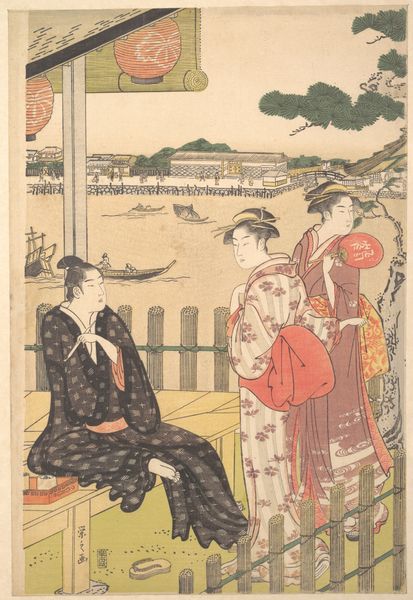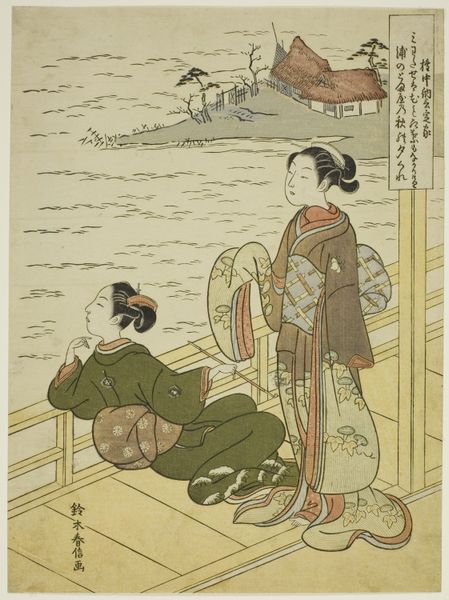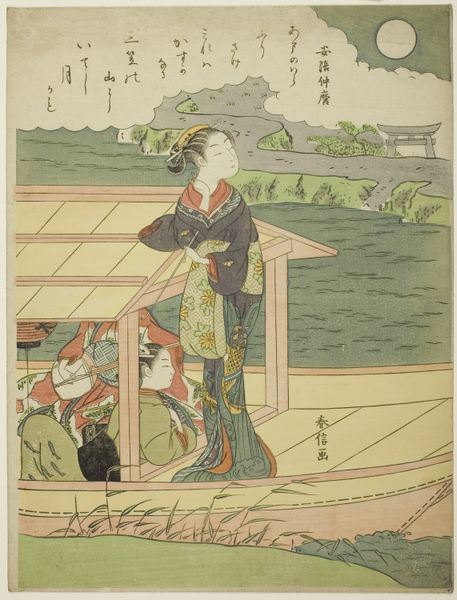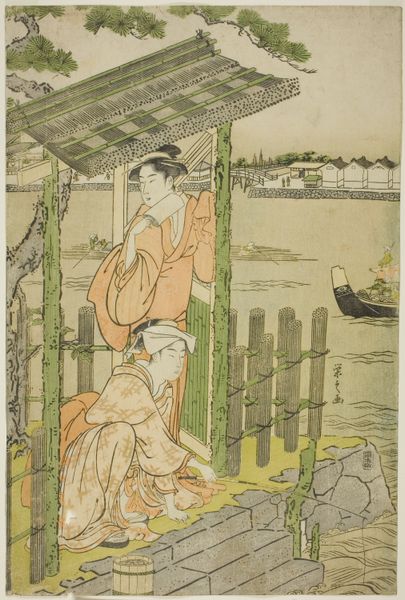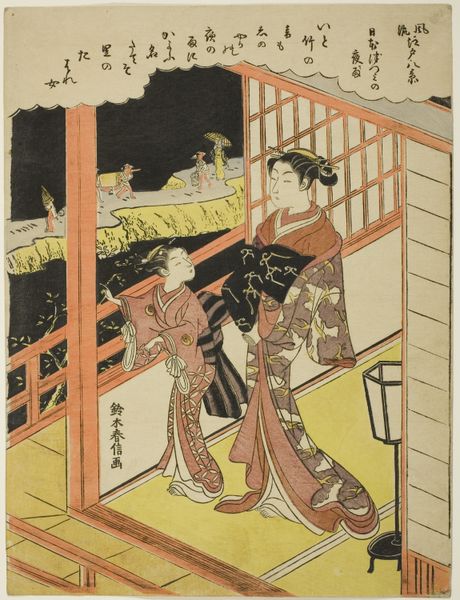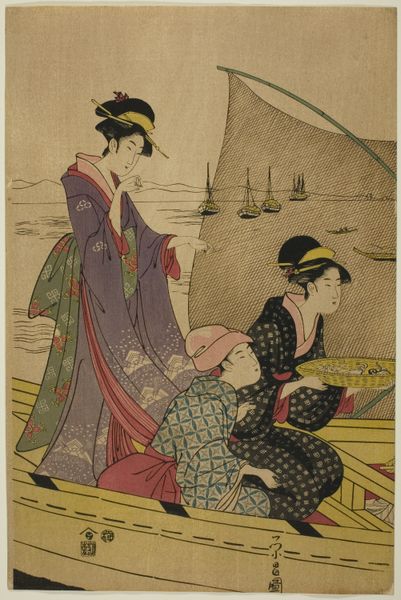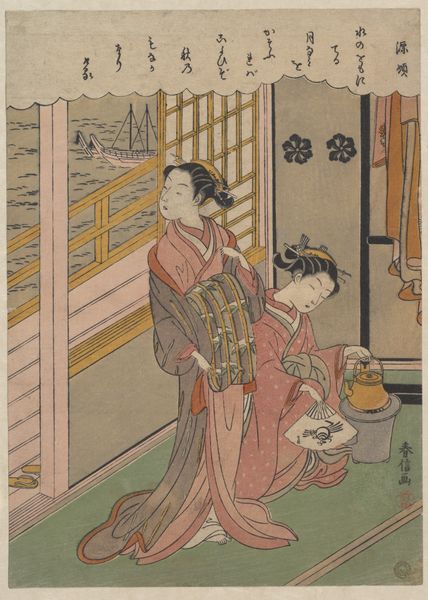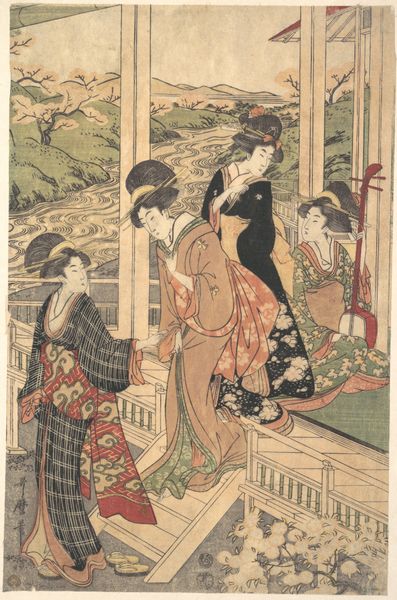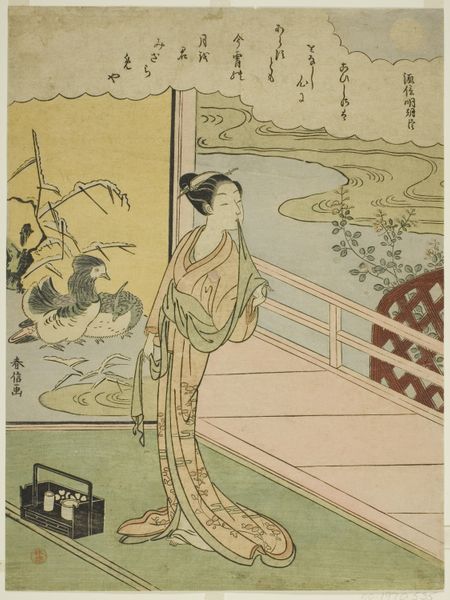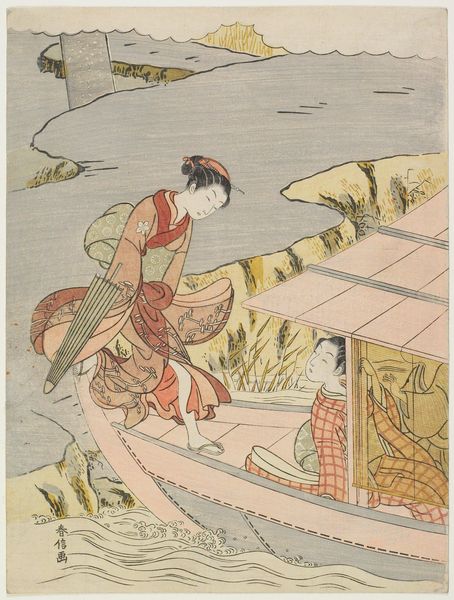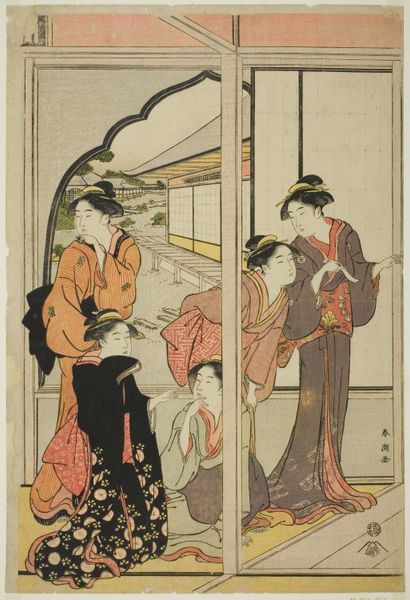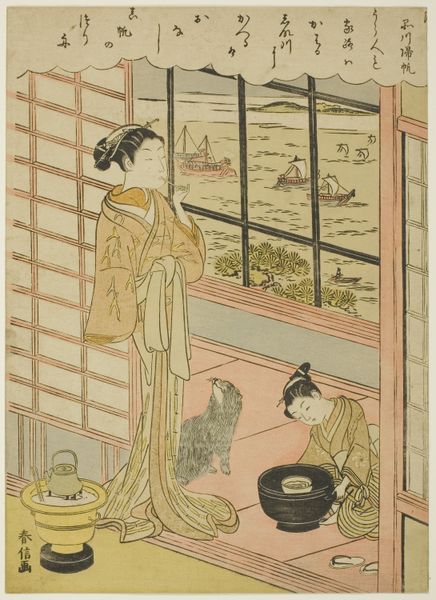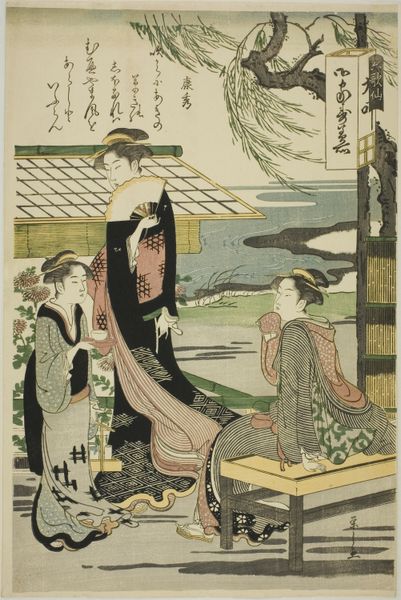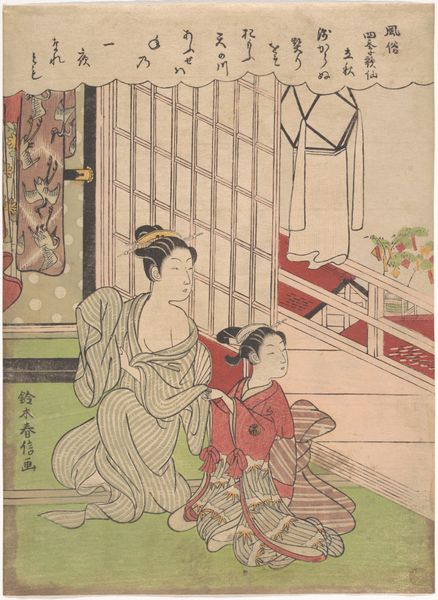
Double-Flowered Cherry: Motoura of the Minami Yamasakiya (Minami Yamasakiya uchi Motoura, Yaezakura), from the series "Beauties of the Floating World Compared to Flowers (Ukiyo bijin hana ni yosu)" c. 1768 - 1769
0:00
0:00
print, woodblock-print
#
portrait
# print
#
asian-art
#
landscape
#
ukiyo-e
#
woodblock-print
#
genre-painting
Dimensions: 29.3 × 21.3 cm
Copyright: Public Domain
Suzuki Harunobu's "Double-Flowered Cherry," made using woodblock print, invites us into the intimate life of Edo-period Japan. The print is part of a series which cleverly compares courtesans to flowers. In the work we see a woman, Motoura, accompanied by a young attendant. The image offers a glimpse into the complex social hierarchies of the pleasure districts, where women like Motoura navigated the intersections of beauty, commerce, and status. Their identities were carefully constructed and commodified, akin to the cultivated beauty of a double-flowered cherry tree. The poems inscribed above the women's heads subtly weave themes of beauty and transience, underscoring the precarious nature of their world. Harunobu's work doesn't simply replicate the traditional representations; he gently infuses them with a sense of humanity, capturing subtle expressions and quiet moments. The telescope held by the young attendant suggests a yearning for a world beyond their immediate surroundings, a silent acknowledgement of their confined existence. The scene invites us to reflect on the gazes, power dynamics, and the intricate balance between artistry and reality.
Comments
No comments
Be the first to comment and join the conversation on the ultimate creative platform.
